
When I received the call from my co-worker, Justin Haag, about coming to the Panhandle to take photos of the bighorn sheep capture, I was more than ecstatic. I had always wanted to see how this process takes place and get close to the sheep. Along with that, who doesn’t want to travel to one of the most beautiful areas of Nebraska, the wildcat Hills and Pine Ridge.
Not knowing what to expect, I went out to watch the crew set up in anticipation of the first and very cold day of the sheep capture in the Wildcat Hills. From a large trailer, tables were set out containing collars, ear tags, syringes, tools, and other materials along with strange looking stretchers with holes in them.
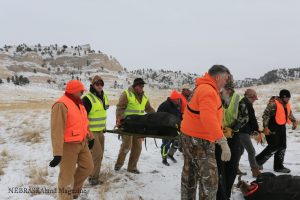
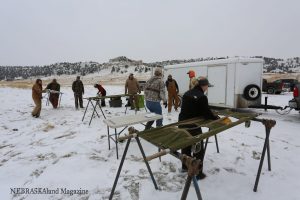
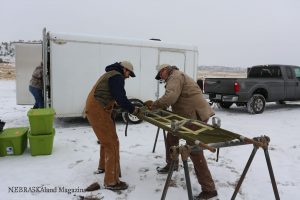
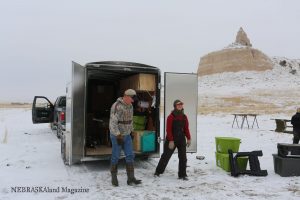
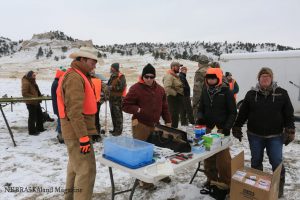
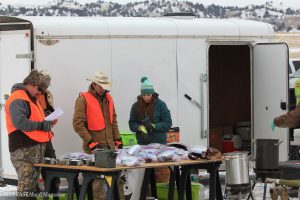
As the crew of around 50 people, consisting of Nebraska Game and Parks Commission (NGPC) staff, Henry Doorly Zoo Veterinarians, USDA Veterinarians, Crawford and North Platte Veterinarians, Lincoln Zoo staff, two NGPC commissioners, and many volunteers filtered to the staging area, my curiosity about the capture increased.
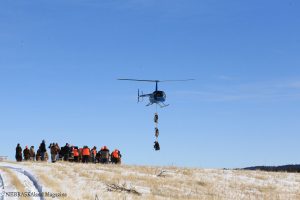
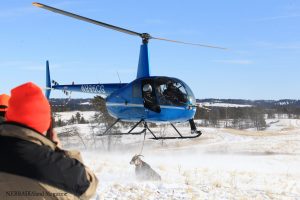
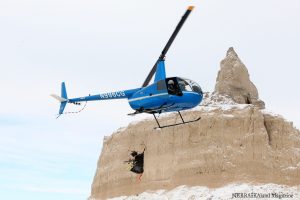
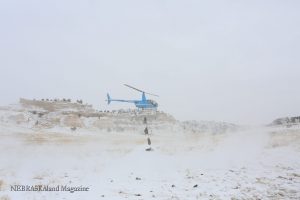
Shortly after set-up a helicopter capture crew from Native Range Capture Services delivered the first bighorn sheep ewes. The sheep were carried from the helicopter drop-off location to the staging area and carefully placed, legs down in the stretchers so they could be closely monitored while they were tagged, fitted for new GPS devices, given shots to bolster their immune system, have blood samples taken and a nasal wash that will hopefully help keep them healthy.
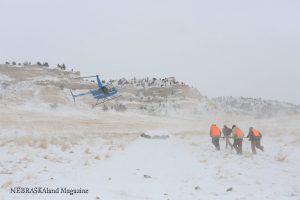
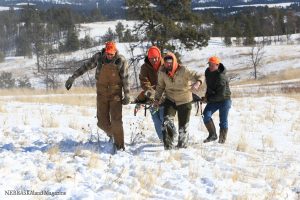
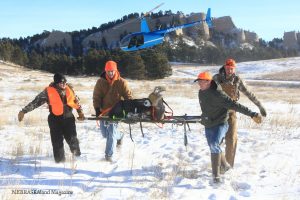
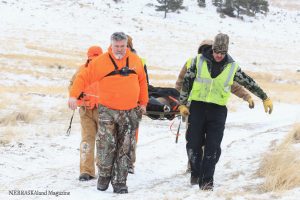
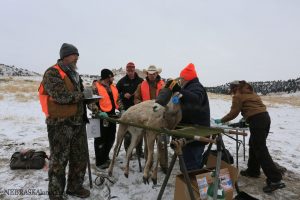
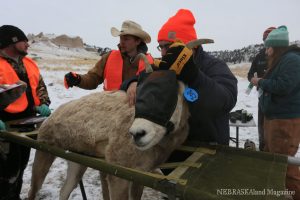
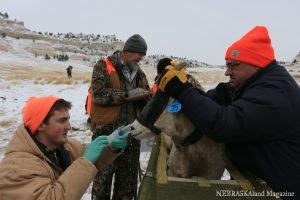
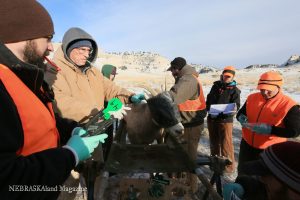

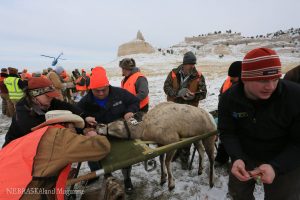
The new GPS tracking collars will replace the VHF models that have been previously used on sheep in the Wildcat Hills and Pine Ridge. The new units will allow for remote monitoring via satellite and provide valuable habitat use while still being able to locate sheep from the ground with telemetry.
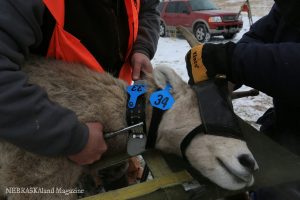
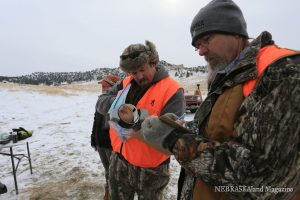
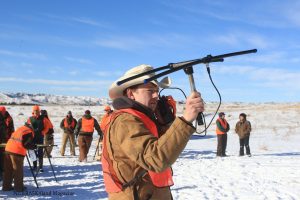
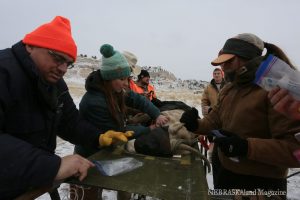
This entire capture process never got old; it was amazing to watch the helicopter crew bring the sheep in and watching the crew diligently processing ewe after ewe and releasing them back to the wild.
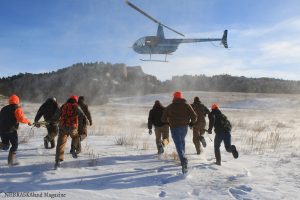
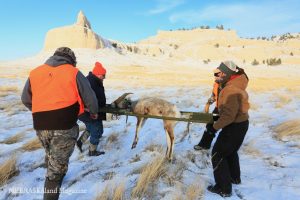
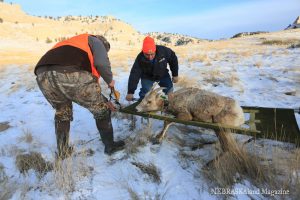
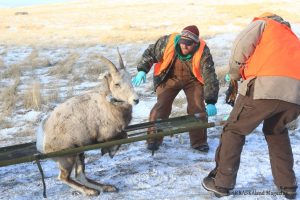
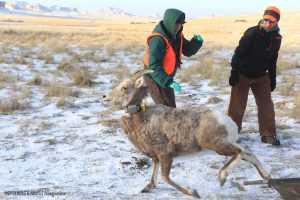
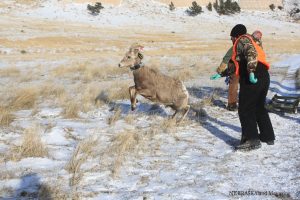
During our first day in the Wildcat Hills a total of 20 ewes were captured and equipped with radio collars.
Day two of the sheep capture was a repeat of day one, only this time we were in the Pine Ridge. 30 ewes were captured during this day and processed, but these ewes were checked for pregnancy. Ultrasound machines were used to see if the ewes were indeed pregnant and those females were given vaginal implant transmitters or VITs. The VITs are placed in the birthing canal and will be expelled when a lamb is born. The lambs will then be captured by Commission staff within 48 of birth and will be collared as part of the study.
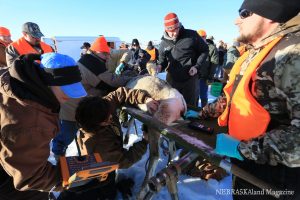
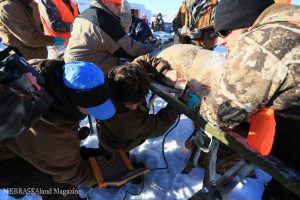
While sheep herds in the Wildcat Hills have done well, the sheep in the Pine Ridge have not been so lucky. This is the second year of the lamb collaring project in the Pine Ridge, where no lambs survived in 2016 or 2017.
This year, the lambs will be given antibiotics to increase their chances of survival and eventually reproduction. Todd Nordeen, big game research and disease program manager for the Commission, said the Pine Ridge herds are in jeopardy of being lost if the lambs keep dying. Although tissue samples have determined that the sheep are dying from pneumonia, there is still much mystery about the exact culprit causing the problem.
“We’re dealing with multiple strains of bacteria and it’s been hard to tell which is most fatal,” he said.
The Commission hopes to find the answers to the sheep’s survival using research gained as part of the capture project.
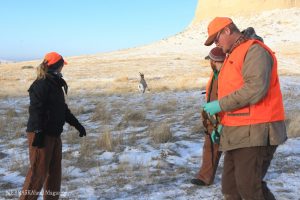

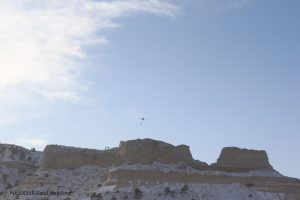
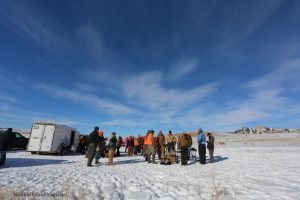
Many individuals and organizations help support the capture project, its continued research and monitoring. Landowners provide access for captures and monitoring, and other groups including the Henry Doorly Zoo, Lincoln Zoo, South Dakota State University, Nebraska Big Game Society, Chadron State College, Crawford Companion Animal Clinic, Alliance Animal Clinic, USDA, Iowa Chapter of the Foundation of North American Wild Sheep and the Wild Sheep Foundation all provide assistance to the program.
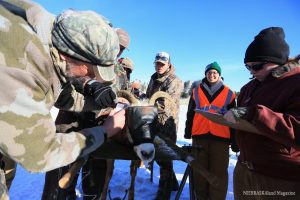
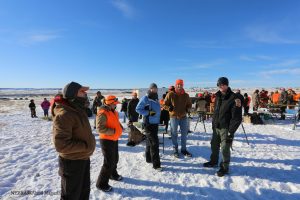
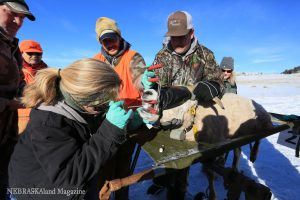
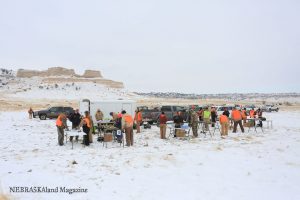

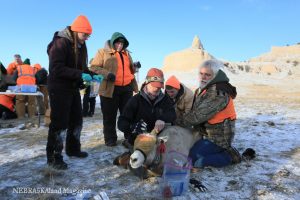
It was a great learning experience and fun to be able to talk with all those that helped during this years’ capture. To be so close to an amazing animal that will hopefully be a staple in the beautiful bluffs of the Wildcat Hills and Pine Ridge was a true pleasure.
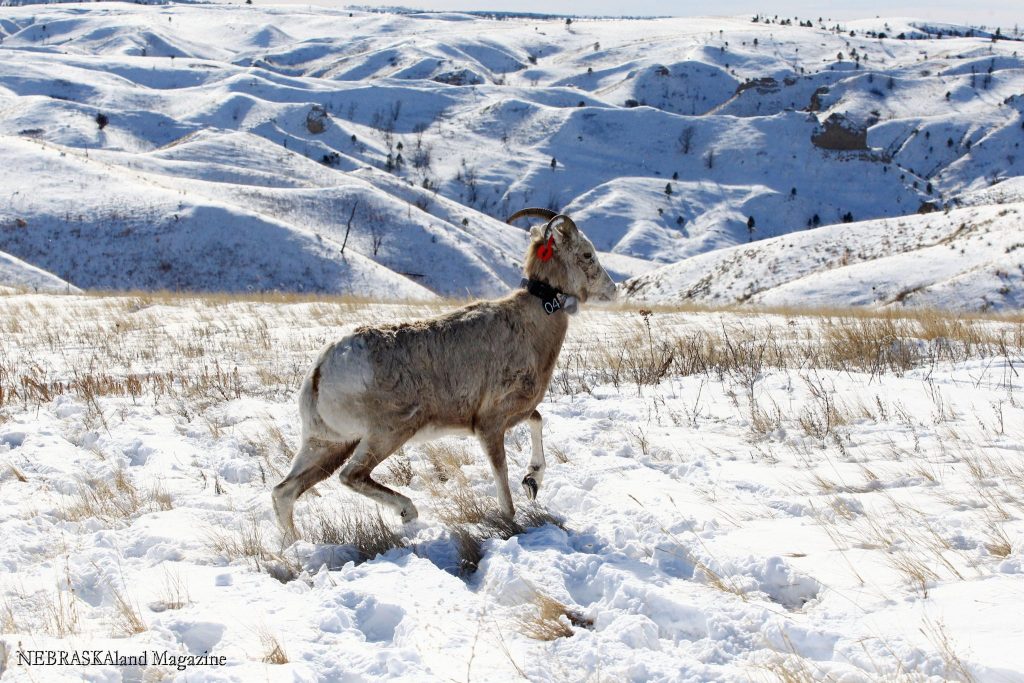
The post Bighorn sheep capture appeared first on NEBRASKALand Magazine.















